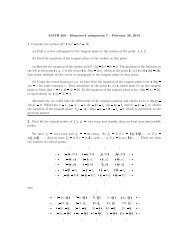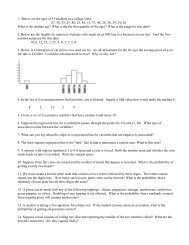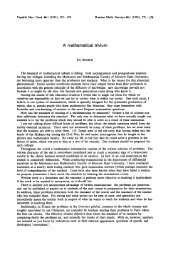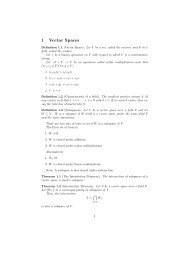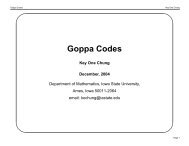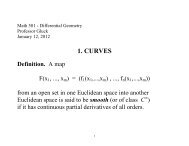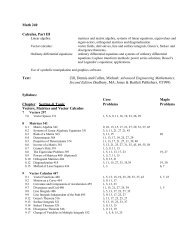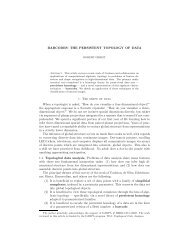MORSE THEORY AND THE GAUSS-BONNET FORMULA Alina ...
MORSE THEORY AND THE GAUSS-BONNET FORMULA Alina ...
MORSE THEORY AND THE GAUSS-BONNET FORMULA Alina ...
Create successful ePaper yourself
Turn your PDF publications into a flip-book with our unique Google optimized e-Paper software.
some scaling. Therefore, any compact manifold can be isometrically embedded in an<br />
Euclidean sphere if we allow scaling.<br />
5.3 Noncompact complete manifolds<br />
Another possible generalization is to drop the assumption of compactness. Consider a<br />
complete noncompact surface S. We should require that χ(S) is finite, which implies<br />
that S must have finite topological type: it must have finite genus and only finitely<br />
many ends. Also, we should require that S has an absolutely integrable Gaussian<br />
�<br />
�<br />
curvature: |K|dA < ∞ in order to guarantee that the integral KdA converges<br />
S<br />
and is finite. In this context we have the following:<br />
�<br />
Theorem 5.4. Cohn-Vossen. 2πχ(S) −<br />
for any complete, noncompact surface.<br />
S<br />
�<br />
KdA ≥ 0. In particular,<br />
S<br />
S<br />
22<br />
KdA ≤ 2π<br />
The Gauss-Bonnet formula might still hold in some cases, or one can study the<br />
�<br />
curvature defect 2πχ(S) − KdA. For a recent study of this area and higher dimen-<br />
sional generalizations, see [5].<br />
S



